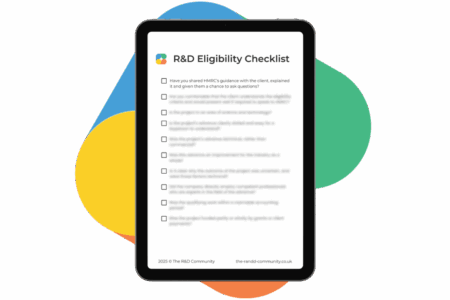It’s crucial that companies seeking R&D tax relief align their view of “R&D for business purposes” with HMRC’s definition of “R&D for Tax Purposes”. There are serious consequences for your client if you prepare a claim on their behalf that doesn’t entirely fit HMRC’s definition. While this is lengthy, it can be paraphrased as:
A qualifying R&D project for tax purposes amounts to the work undertaken, directly or indirectly, to advance baseline knowledge or capability in a field of science or technology, through the resolution of scientific or technological uncertainty.
This definition hasn’t changed since the inception of the R&D Scheme in 2000, but understanding it and what constitutes “uncertainty” are more crucial than ever in avoiding HMRC’s compliance checks.
So, what exactly does “uncertainty” mean in this context? HMRC define it further in their guidance, which you should read! Unfortunately, we’ve found that for many advisors, this explanation raises more questions than it answers.
How can companies better understand and apply these rules to assess their project activities for qualifying work?
Routine vs technological uncertainty in R&D tax relief
Any R&D project should start with a competent professional, who has the technical skills and experience to assess whether an advance in technology is both necessary and feasible. Their view is based on a thorough understanding of what’s already possible in the industry using current knowledge and capability.
If R&D is deemed necessary, the Competent Professional will typically then identify the technological gaps, limitations and problems that prevent the advance being achieved.
The next step is to address the gaps, limitations and problems that can be resolved by routine work. For example, they might perform existing tests, hire a third-party subcontractor with more expertise, or take sensible, methodical steps towards a solution.
If these actions solve the issue, HMRC would consider it to be a ‘routine uncertainty’ as opposed to a ‘technological or scientific uncertainty’.
But, if these attempts to apply existing methods and technology fail, HMRC should agree that scientific or technological uncertainty has been established. Congratulations, you have reached the start of your R&D project for tax purposes!
From this point, any work undertaken to resolve this uncertainty will be qualifying activity. That ends at the point where you have filled the knowledge gap, achieved target capability, or abandoned this aspect of the project as you were unable to devise a solution.
Found this explanation helpful? The Certification in R&D Tax Relief contains 6 course and other materials which help to explain dozens of other essential R&D tax relief concepts.
Technological uncertainties in R&D enquiries
In order to improve compliance, HMRC is increasingly using the concept of technological uncertainty to determine whether the R&D was valid. In particular, they’re focusing on areas like software development, where it’s difficult for non-experts to understand the nature of advances in computer science or software engineering.
In previous years it was common to hear about successful software claims for bespoke systems, new platforms or the development of new functionality. Now, it’s more common to see HMRC challenge these claims on the basis that there wasn’t any technological uncertainty within the project. That’s why HMRC is now so keen to understand if existing tools were used in a routine manner to develop a solution, or whether the project truly pushed back the boundaries of existing knowledge or capability.
Any company claiming R&D tax relief should have a good working knowledge of how the DSIT guidelines apply to its projects. Reaching that understanding can take time, especially when looking at riskier industries like Software or Construction.
As an advisor, you can protect your clients by making sure they understand these concepts and helping them gather all the necessary information to establish eligibility. Our R&D Eligibility Checklist can help you do that. It provides a structure you can work through in conversations with your client, allowing you to build a strong supporting narrative for their claim.





